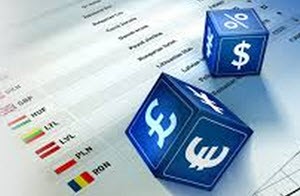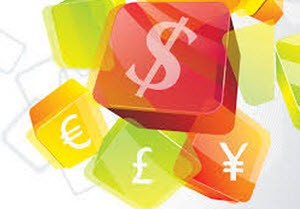Foreign exchange spot (FX spot)
 A foreign exchange spot transaction is a contract where one party sells a currency to another party, for an agreed price. The transaction takes place right away, while payment is made later. The exchange rate used is called the spot exchange rate.
A foreign exchange spot transaction is a contract where one party sells a currency to another party, for an agreed price. The transaction takes place right away, while payment is made later. The exchange rate used is called the spot exchange rate.
Foreign exchange spot transactions are extremely common on the forex market. Statistics from the year 2010 show that for that year, over 35 percent of all forex trade involved FX. By april 2013, the daily turnover for FX spots was the equivalent of nearly 2 trillion USD.
FX spot transactions can be carried out in several different ways. Utilizing electronic broker systems is popular, but major actors within the forex trade can use DirektDetta instead to bypass the need for any broker firm.
Spot date
The day when the payment is due is called the spot date. The spot date is normally not far into the future; a spot date one bank day after the transaction (T + 1) is the most common set up for FX spots that involves USD + EUR, CAD, RUB or TRY. For other currencies, a spot date two days after the transaction (T + 2) is more common.
Foreign exchange option (FX Option)
If you are the holder of a foreign exchange option (FX option) you have the right, but not the obligation, to exchange a certain amount of a certain currency for another specified currency to a pre-determined exchange rate on a certain date. The exchange rate is called strike price.
 Example: You have an FX option that gives you the right to exchange 1 million AUD for 1.5 million USD on July 31 2016. The strike price is thus 1.5.
Example: You have an FX option that gives you the right to exchange 1 million AUD for 1.5 million USD on July 31 2016. The strike price is thus 1.5.
FX Options are usually traded over the counter (OTC) and not on exchanges. There are however a few exchanges that list FX Options, including the International Securities Exchange, the Chicago Mercantile Exchange and the Philadelphia Stock Exchange.
Companies and other entities will typically use FX options to mitigate currency risks for cash payments that they believe, but are not certain, will come at a certain time in the future. If an entity has a higher degree of certainty regarding the payment, an FX forward is a more common choice than an FX option.
Foreign exchange forward (FX Forward)
A foreign exchange forward (FX forward) is a contract where two counterparts agree to transfer ownership of a certain asset at a certain date in the future for a a predetermined price. The transfer and the payment will take place on the same date.
- An FX Forward differs from an FX Spot by not having a transaction that takes place right away.
- An FX Forward differs from an FX option by being binding for both counterparts. If you are the holder of an option, you can elect not to exercise the option. This is not the case for a forward.
FX forwards are popular among companies and other entities that wants to mitigate currency risk. If the entity is certain that it will receive a payment in a foreign currency on a certain date, it can use an FX forward to lock the exchange rate right now, thus safeguarding themselves against fluctuating currency rates on the forex market.
FX forwards are highly customized contracts. On variable that tend to vary a lot from one contract to the other is the expiry date. For some FX forwards, this date is only one bank day into the future when the FX forward is created. For others, the expiry date is months or even years into the future.
Foreign exchange swap (FX Swap)
 In a foreign exchange swap (FX swap), the two counterparts agree to change currency with each other during a predetermined period of time, and then change back again when this period of time is over. An FX swap can therefore be described as an FX spot + an FX forward.
In a foreign exchange swap (FX swap), the two counterparts agree to change currency with each other during a predetermined period of time, and then change back again when this period of time is over. An FX swap can therefore be described as an FX spot + an FX forward.
Example: Company ZZZ swaps 1 million USD for 1.2 million EUR with Company YYY on January 31st 2016. The two counterparts commits to swapping the currencies back again on January 31st 2017.
By using this FX swap, Company ZZZ gets access to euro that they need for their business during 2016.
N.B! An foreign exchange swap is not the same thing as a currency swap. A currency swap concerns the swapping of interest rates and/or amortizing payments for loans in different currencies.
Foreign Exchange Futures (FX Futures)
A future is a standardized forward contract, and a foreign exchange future (FX future) is thus a standardized foreign exchange forward. The standardization makes them more interesting for investors and speculators. Unsurprisingly, the first standardized forward-contracts for currency trade were developed by an exchange – the International Commercial Exchange in New York. When they launched their standardized forward-contracts for currency trade back in the 1970’s it was not an immediate success, largely due to the fact the Bertton Woods-systemet was still in force. Today, the situation is very different and the trade in FX futures has grown to encompass vast amounts of currency each year. The Tokyo Financial Exchange, the Euronextliffe, the Intercontinental Exchange and the International Monetary Market (IMM) are all important hubs for FX futures trade.
An FX future is a contract where one counterpart agree to exchange a certain amount of a certain currency for a certain amount of another currency at a specific date. The FX future gives both counterparts an obligation to carry out the transaction.
Since FX futures are highly standardized contracts, the specific date is normally not picked freely to suit a certain counterpart. Instead, the third Wednesday of March, June, September or December is used for most exchange traded FX futures.
